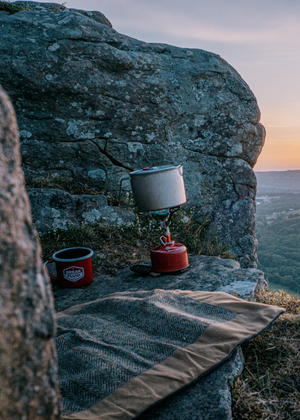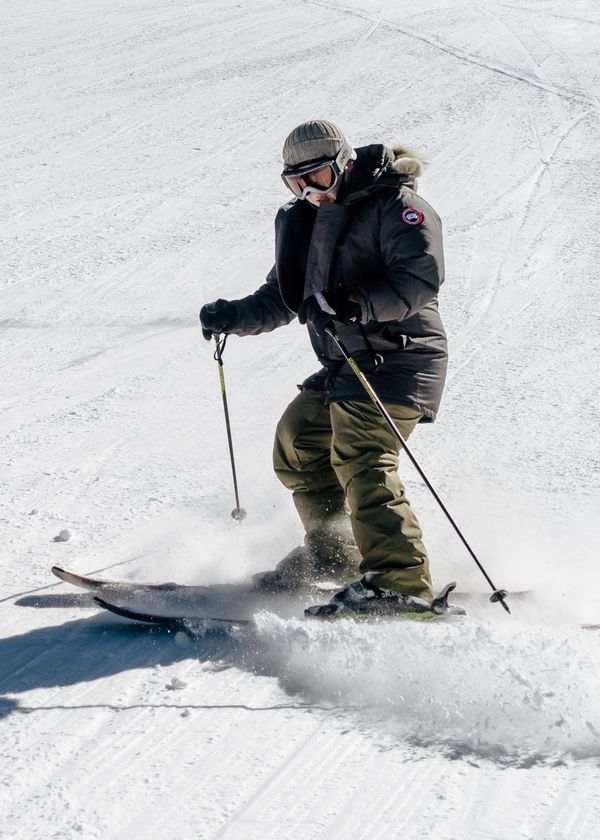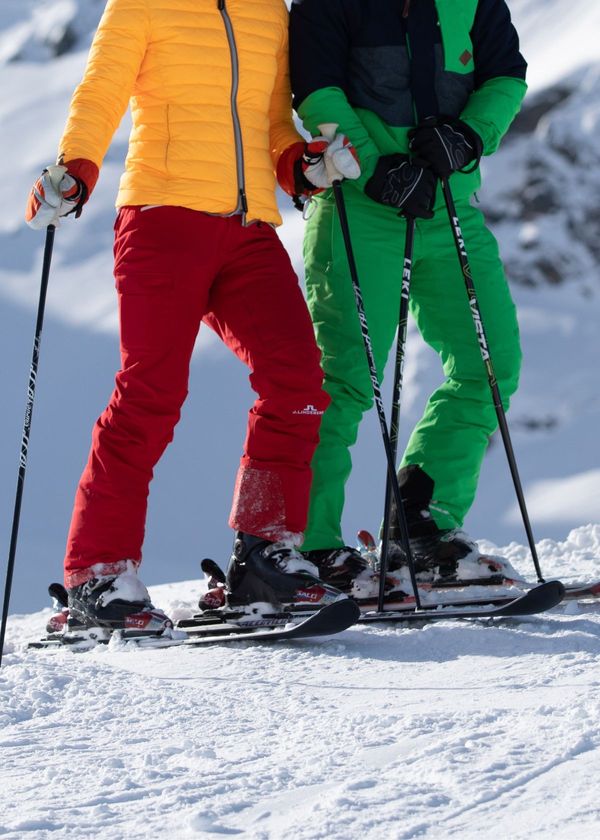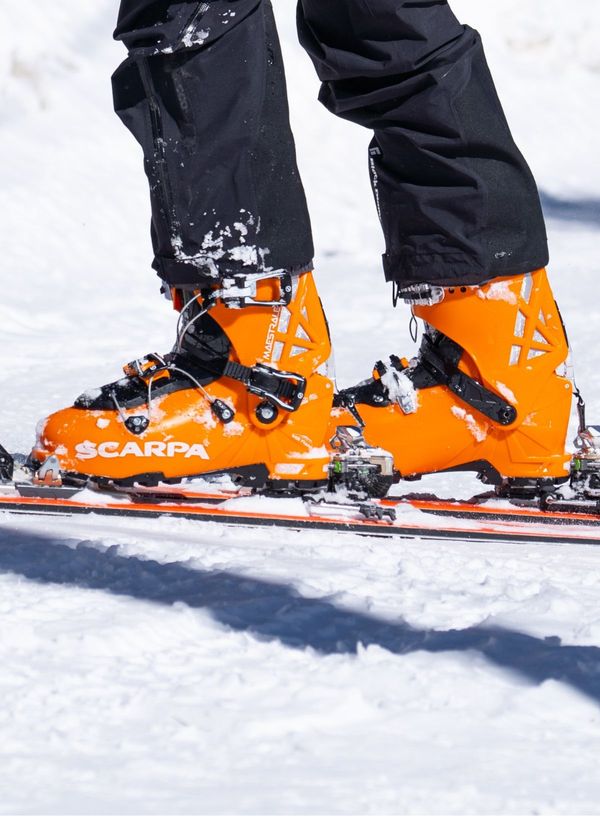Cross Country Skiing provides an excellent form of exercise, combining the most beneficial aspects of many other activities.
It is a low-impact sport that is relatively safe and easy to learn, while at the same time working your total body muscles and providing cardio benefits. Because it requires more body synergy than traditional skiing activities, beginners will find their natural balance significantly improving within a few sessions out on the trails.
This also makes Cross Country Skiing ideal for those seeking to build muscle strength as well as perfecting coordination—a great way to maintain overall fitness as you make your way through the winter months.
A Beginner's Guide - If you are new to cross country skiing here are several tips:
1. Understand different types of cross country skiing –
Classic, Skating, and Touring; each type is suited to different terrains and purposes.
Cross country skiing is a great way to get out into nature and explore the vastness of the wintery outdoors. Getting started is fairly straightforward, though it's important to understand the three different types of cross country skiing available.
- Classic cross country skiing is good for traversing flat terrain and uphill climbs on groomed tracks,
- Skating provides more speed and agility on flatter surfaces;
- Touring skis allow you to access backcountry terrain with greater ease and help you over more difficult terrain.
Each type is suited towards different kinds of terrain and varying purposes, so depending on where you intend to ski, it's essential know which kind would be most suitable for your needs.
2. Gather the necessary gear –
Cross Country skis, ski boots, poles, waxes (for classic skiing), bindings, safety equipment such as helmets and back protectors in case of falls.
If you're considering taking up cross-country skiing, be sure to plan ahead and gather the necessary gear.
- You'll need cross country skis, ski boots, poles, and bindings for a start.
If you plan on doing classic Nordic skiing, waxes may also be required depending on the snow conditions - warm weather generally requires warmer waxes.
- Additionally, safety equipment such as a helmet and back protector should be integrated into your ski wardrobe for extra protection in the event of a fall.
Choose the right gear and you'll be ready to hit those trails!
3. Learn the basics of how to stand on skis and move around –
learn the snowplow stance and techniques like herringbone or kick-turns that you may need when crossing hilly terrain.
Cross country skiing is an enjoyable way to get out and enjoy the snow, but before you hit the trails, there are a few basics you have to learn to ensure a successful and safe adventure.
- Getting comfortable on skis is key – practice standing in the proper stance with your skis parallel and knees slightly bent can help you develop better balance.
- Then it’s time to learn some turning moves. Start by mastering the snowplow technique, which can be used when going downhill or in tight turns.
- You may eventually need something stronger for rougher terrain - herringbone step ups or kick-turns may be necessary if you're dealing with towering hillsides or tangled terrain.
With a little patience and practice, cross country skiing can quickly become one of your favorite outdoor activities!
4. Get familiar with what waxes work on which type of snow –
typically either cold or warm waxes depending on the temperature outside; there are also special glide waxes for racing skis.
Cross country skiing is a wonderfully enjoyable and rewarding sport, but knowing the right tips and tricks can make all the difference.
- One of the most important things beginners should consider when starting off is getting familiar with waxes and which type works best in different snowy conditions.
- Cold temperature waxes work better in cold weather and warm waxes are more suitable for warmer days.
- If you’re a more experienced skier and plan on competing, it’s also worth investing in special glide waxes for your racing skis so that you can avoid any extra resistance during a race.
This small but crucial step can go a long way to help ensure an enjoyable skiing experience regardless of the conditions outside.
5. Learn about the different types of bindings and how to adjust them for a secure fit –
remember that not all bindings are compatible with all boots!
Cross-country skiing is an excellent way to explore nature and keep active. Don't let the seemingly complex binding system limit your ability to get out on the trails.
- Different types of bindings are available, so it's important to make sure your bindings match up with your boots before hitting the trails.
- To guarantee a secure fit which is essential for safety and performance, take time to research the correct bindings and practice adjusting them yourself.
Many expert skiers will recommend going to a fitting center so you can be sure that everything fits correctly - this will help you avoid any unnecessary injury or slips while you gain proficiency on the ski slopes!
6. Practice skiing gently at first –
Cross-country skiing is an enjoyable way to get active and experience nature, but it can seem intimidating to beginners as they stare up at mountains or miles of trails. The good news is that you don’t have to jump right in at the steepest inclines or longest distances.
- Start small by taking shorter loops rather than attempting longer treks before you’re ready. With each practice loop, you not only begin to understand the feel of cross-country skiing but also build your endurance very gradually over time.
- In order to avoid burnout, be sure to space sessions out across days or weeks instead of striving for a huge accomplishment all within one day.
Keeping expectations low is key when first getting into cross-country skiing, allowing for ultimate enjoyment.
7. Know how to dress appropriately for cross country skiing –
As a beginner, there's no doubt that you want to stay warm and comfortable.
It is important to remember that layers are key when it comes to facing the cold winter weather associated with the sport.
- Be sure to pack enough clothes so that you can easily adjust your clothing depending on the temperature. woolen base layers are an essential and will be more efficient in wicking away sweat than cotton before it gets chilly.
- Additionally, it is wise to bring along some extra clothes such as a jacket or insulating layers in case temperatures start dropping or you find yourself in an unexpected cold situation.
Being prepared like this will ensure that your time spent on the ski slopes is well-rounded and enjoyable!
8. Understand the basics of navigation while out on the trails –
Cross Country Skiing for Beginners is a great way to explore and experience the beauty of nature. Before getting out on the trails, it's essential to understand how to navigate around your surroundings.
- Utilizing a map or GPS device is the most reliable way to ensure that you don't end up hopelessly lost!
- Additionally, keep an eye out for posted signs while skiing — this will help ensure that you remain on the correct trail instead of mistakenly entering a road or other off-limit areas.
With proper knowledge and preparation, cross country skiers can have fun and stay safe while enjoying their adventure in nature!
9. Consider bringing along snacks and water as well as extra clothes if you plan on spending a long time out on the trails –
To ensure you have an enjoyable experience, it's important to come prepared with plenty of snacks and water –
- energy bars, fruit, granola bars, trail mix, or other bulk snacks will help keep you going during longer hikes.
- As with all outdoor activities in cold weather conditions, hydration is key.
- Make sure to bring enough water to last throughout your excursion.
- Also remember to bring extra clothing layers in case the temperature drops unexpectedly.
With these preparations taken care of, you can focus on having a safe and fun time skiing cross country trails!
10 . Be aware of potential hazards
Cross Country Skiing is a great way to get some exercise while being surrounded by breathtaking scenery.
However, with outdoor skiing on terrains of different grades, it’s important to be aware of potential hazards that come with the sport.
- Rocks covered in snowfall, low hanging branches and icy patches can create tripping or slipping hazards;
- animals may also occasionally cross your path.
- So before hitting the slopes, plan ahead by researching areas that might be more prone to these dangers due to the terrain or nearby wildlife activity and be prepared accordingly.
- Make sure you’ve got all your safety gear - like helmets and gloves - ready to go!
Now go out and have a great time in the wonderful outdoors!
Thanks for Reading!
and
Happy Cross Country Skiing!









